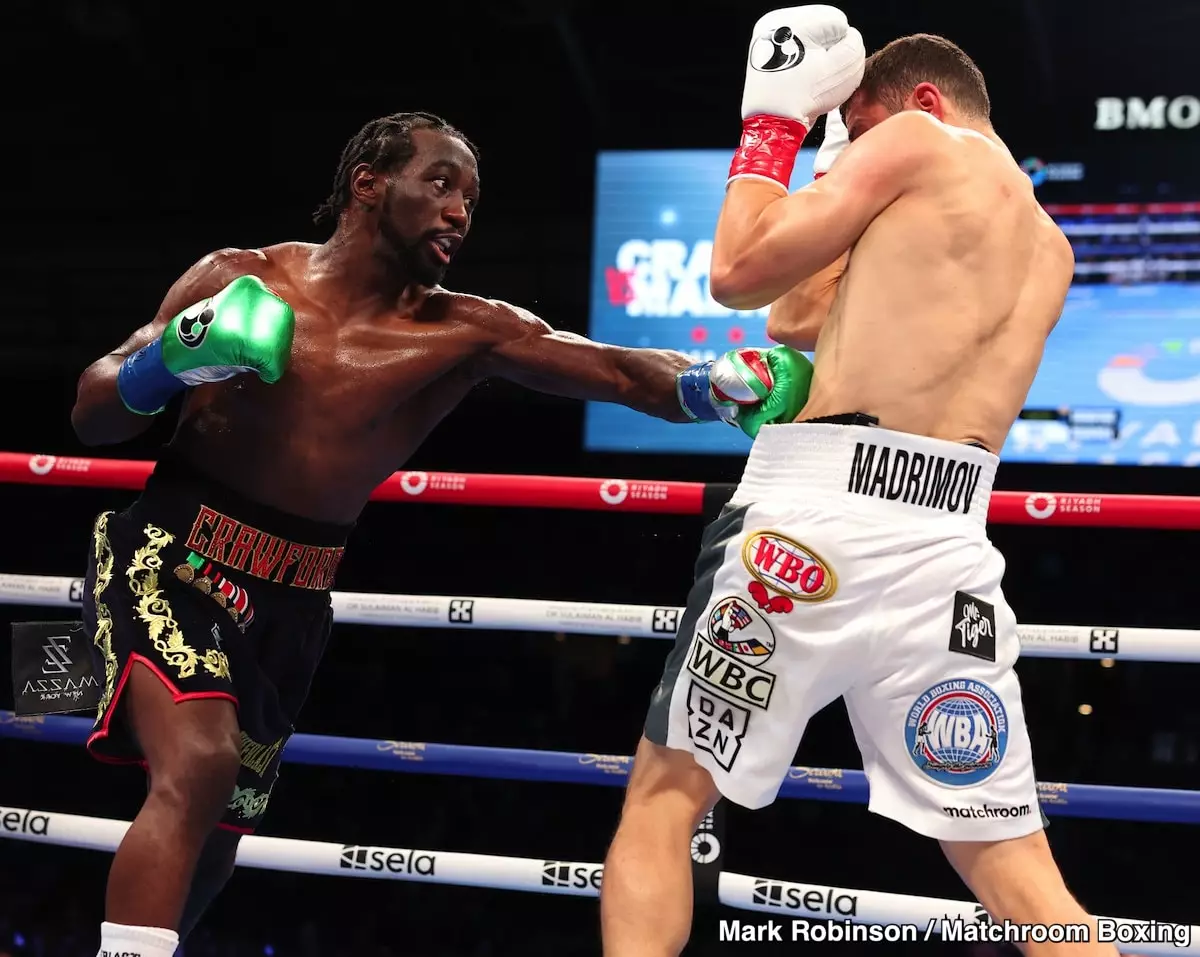Former professional boxer Tim Bradley has stirred considerable debate within boxing circles with his recent assertion about a potential clash between Canelo Alvarez and Terence Crawford slated for 2025. Bradley, a well-respected commentator and analyst, expressed that a hypothetical encounter between the two fighters would result in Canelo receiving a substantial beating. While such predictions certainly create buzz, they require deeper examination, especially considering the contrasting backgrounds and trajectories of both boxers.
Crawford, now 37 years old with an impressive record of 41 wins and no losses, recently made a move up to the junior middleweight division. His fight against Israil Madrimov showcased not just his experience but also raised questions about his physicality against younger adversaries. Despite a unanimous decision victory, many observers noted that Crawford appeared to be showing signs of age, leading to speculation about his capacity to compete effectively against elite fighters like Canelo, who boasts a stellar record of 62 wins, 2 losses, and 2 draws.
Canelo Alvarez, often regarded as one of the best pound-for-pound fighters in the world, possesses a unique combination of speed, power, and ring intelligence. His ability to adapt to different styles has made him a formidable opponent across various weight classes. While age is a factor, particularly for a boxer stepping into the ring in their late 30s, Canelo’s active fighting schedule and resilience cannot be overlooked. The question arises whether Crawford can truly capitalize on any perceived weaknesses in Canelo’s game or if that premise is overly optimistic.
Bradley’s confidence in Crawford may stem from admiration rather than a thorough analysis of the hard data. Throughout his career, Bradley has been a staunch supporter of Crawford, often praising his capabilities against less formidable opponents. This bias might warp the overall perspective, suggesting that any victory he has over Canelo would stem from Crawford’s talent rather than a tangible comparative analysis of both athletes’ recent performances.
Moreover, the overall context of boxing today is riddled with uncertainties. There are many rising stars and established champions in both the junior middleweight and middleweight divisions, meaning that both Canelo and Crawford have a slew of potential challenges ahead. For Crawford to face Canelo in 2025, he would have to prove himself consistently against other top-tier contenders. The current landscape suggests that this could be an uphill battle for the former pound-for-pound king, especially given his less impressive outing in recent performances.
When discussing potential routes for other fighters like Devin Haney, who has faced setbacks in his career, Bradley’s advice to return to his roots in Mexico is steeped in nostalgia rather than recent reality. It implies a simplistic solution to complex problems. Boxing careers are rarely linear; fighters often emerge from diverse backgrounds and experiences, each dictating their path uniquely. Expecting a fighter to revert to a prior environment to regain their edge may fail to account for the substantial growth and evolution their skills undergo throughout their careers.
While Tim Bradley’s passionate defense of Crawford is both entertaining and revealing of boxing politics, it may not align with the current factual realities of the sport. As fans speculate on a future bout between Crawford and Alvarez, it is crucial to consider not just the hype but also the strategic realities that both fighters will face. Ramirez’s insight into how fighters must evolve and adapt to survive in elite competition should offer caution against overly favorable assessments based on historical admiration.
As Bradley rightly points out, the stakes are high, and the boxing community will be eager to witness how these narratives unfold. Still, predictions made in the heat of passion should stand on the solid foundation of critical analysis to foster a meaningful discourse on the state of the game. After all, in the world of boxing, predictions often age faster than the boxers themselves.


Leave a Reply